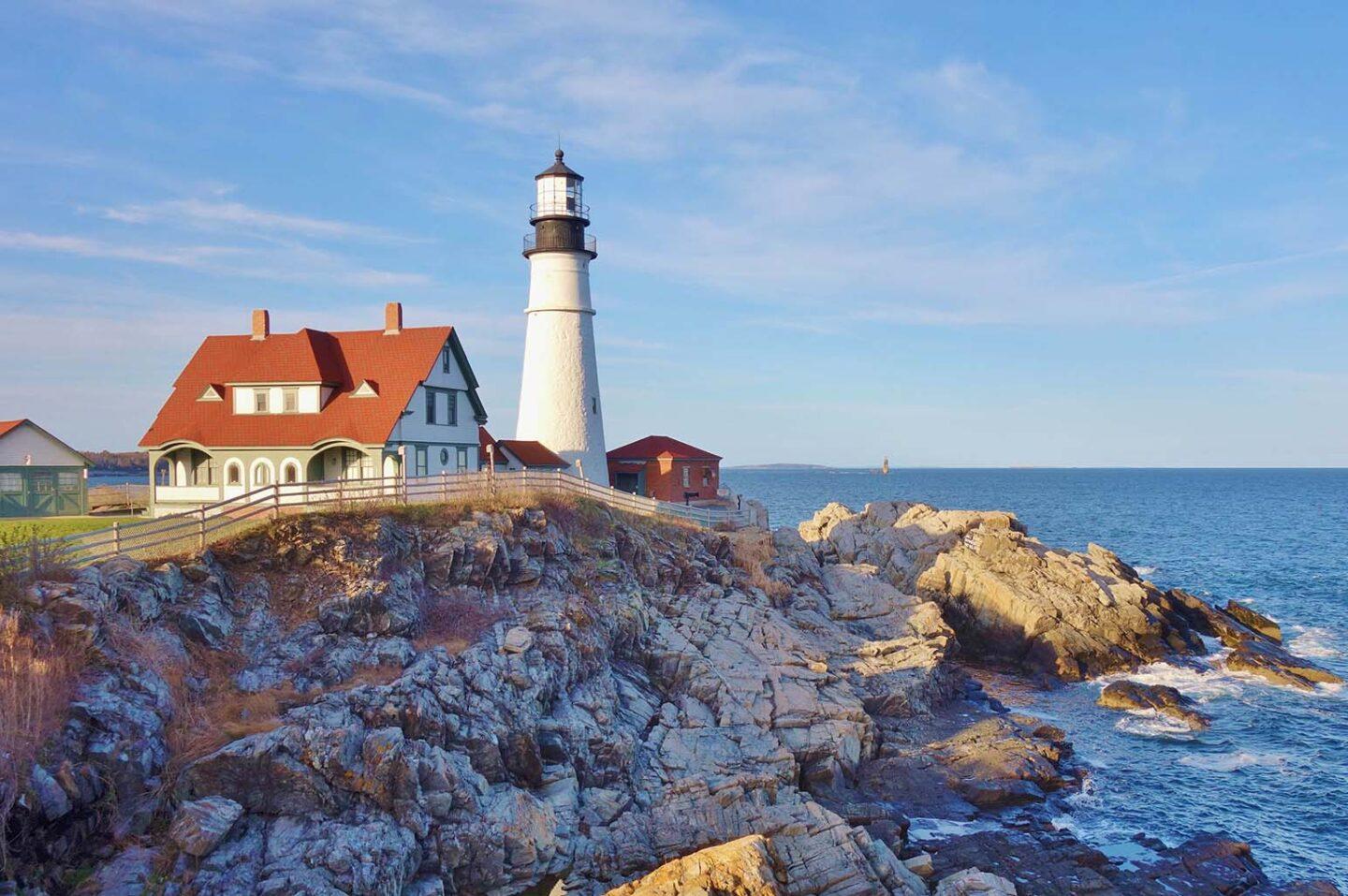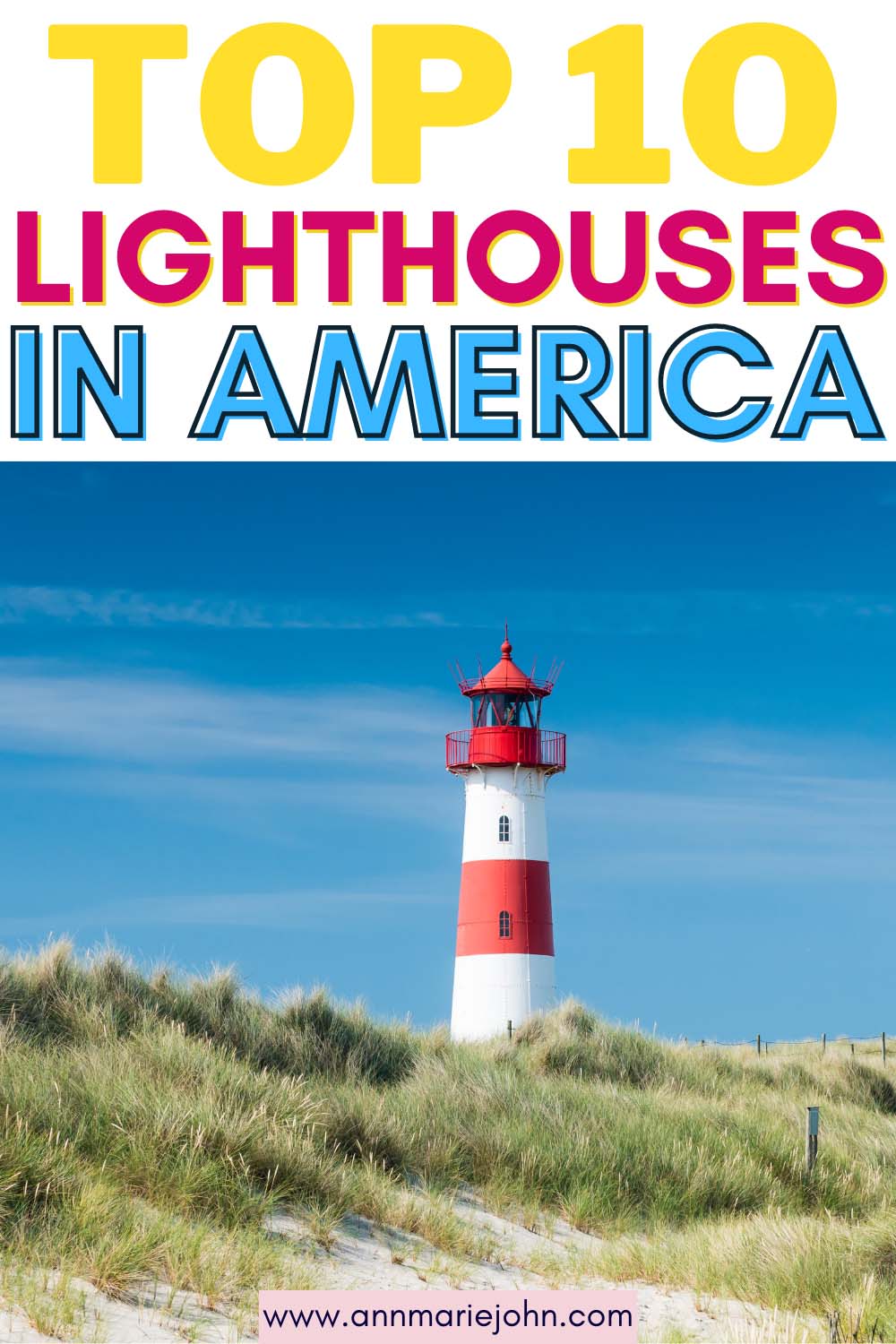Uncover the storied past of the United States’ most captivating lighthouses. Immerse yourself in their history, architecture, and breathtaking surroundings.

Lighthouses are far more than mere navigational aids guiding mariners through treacherous waters; they are beacons of history, standing as monumental testaments to the maritime heritage of the United States. Each lighthouse, with its unique architecture and storied past, offers a captivating window into the trials, triumphs, and transformations of the regions they protect. These structures not only illuminate our coastlines but also shine a light on the cultural and historical landscapes that have shaped the nation. From towering, cliff-side sentinels to humble, shore-lined guides, lighthouses symbolize resilience, guidance, and the enduring human spirit.
In this article, we examine 10 must-see lighthouses across the nation, each of which stands out for its own compelling story and breathtaking surroundings. Join us on a journey to discover these iconic landmarks, where you’ll find more than just stunning views—you’ll uncover stories of hope, heroism, and history etched into the very shores they guard.

1. Cape Hatteras Lighthouse, North Carolina
Cape Hatteras Lighthouse stands as the tallest brick lighthouse in the U.S., reaching an impressive height of 198 feet. Known for its distinctive black and white spiral stripes, it was originally built in 1870 but had to be moved inland in 1999 due to the threat of shoreline erosion. This lighthouse is a critical guide for ships navigating the treacherous waters of the Atlantic Ocean near the Outer Banks. It offers climbing tours that allow visitors to enjoy panoramic views of the surrounding landscape. The site also includes a visitor center where the history of this iconic lighthouse is detailed. Cape Hatteras is not only a functional aid to navigation but also a beloved landmark.
2. Portland Head Light, Maine
Portland Head Light, Maine’s oldest lighthouse, was first lit in 1791 after its commission by George Washington. Situated on a headland at the entrance to Portland Harbor, it has been a vital aid for ships making their way to this busy port. The surrounding park provides visitors with breathtaking views of the rugged Maine coastline and the Atlantic Ocean. This lighthouse features a museum housed in the former keeper’s quarters, offering insights into its operational history and maritime heritage. Portland Head Light remains one of the most photographed lighthouses in America. It embodies Maine’s enduring connection to the sea.
3. Pigeon Point Lighthouse, California
Pigeon Point Lighthouse, towering 115 feet tall, is among the tallest lighthouses on the West Coast and has been operational since 1872. This striking structure serves as a beacon along the scenic Pacific Coast, guiding ships with its powerful light. It is particularly famous for its breathtaking views and as a prime spot for whale and seal watching. The lighthouse is now managed as a state historic park, featuring a hostel within the keeper’s quarters for overnight stays. Annual lighting of the Fresnel lens is a special event that draws crowds, celebrating the rich history of the site. Pigeon Point’s coastal beauty and historical significance make it a beloved landmark.
4. Split Rock Lighthouse, Minnesota
Built in 1910, Split Rock Lighthouse stands sentinel over Lake Superior, one of the most treacherous bodies of water known for its shipwrecks. This lighthouse became essential for the iron ore shipping industry, guiding vessels safely through Minnesota’s North Shore. Its construction was prompted by a massive storm in 1905, which highlighted the area’s need for a lighthouse. Perched on a 130-foot cliff, the lighthouse and its spectacular setting are now preserved as a state park. Visitors can explore the keeper’s house, fog signal building, and a museum that narrates the story of this iconic beacon. Split Rock Lighthouse is celebrated for its historical importance and picturesque location.
5. Bodie Island Lighthouse, North Carolina
The Bodie Island Lighthouse, with its distinctive black and white horizontal stripes, marks a critical point along the Atlantic Coast. The current structure, completed in 1872, is the third incarnation after its predecessors were lost to war and natural forces. It’s particularly noted for its original Fresnel lens, which still casts a light visible for 19 nautical miles. Visitors can climb the 214 steps to the top, where they are rewarded with expansive views of the Cape Hatteras National Seashore. The surrounding marshlands also offer opportunities for bird watching and enjoying the natural beauty of the area. Bodie Island Lighthouse remains an active navigation aid and a historical treasure.
6. Cape May Lighthouse, New Jersey
The historic Cape May Lighthouse has been a navigational landmark at the tip of New Jersey since its completion in 1859. It continues to function as an active aid to navigation and is open to the public for tours. Visitors can climb to the top of the lighthouse to enjoy sweeping views of the Cape May Peninsula and the Atlantic Ocean. The site includes a visitor center with exhibits on the lighthouse’s history and the area’s marine environment. Special events and night climbs are highlights that draw many to this historic site each year. The Cape May Lighthouse stands as a testament to New Jersey’s rich maritime heritage.
7. Tybee Island Light Station, Georgia
The Tybee Island Light Station is one of the oldest and most intact lighthouses in America, having guided mariners into the Savannah River since 1736. Its history includes several rebuilds, the most recent of which dates to 1867, reflecting its enduring importance. The lighthouse has been meticulously restored, including its original First Order Fresnel lens. Visitors can climb the 178 steps to the top for panoramic views of the Georgia coast. The adjacent museum in the former military battery provides context to the site’s strategic significance. Tybee Island Light Station remains a historic beacon of safety and a popular destination for tourists.
8. Montauk Point Lighthouse, New York
Commissioned by George Washington and completed in 1796, Montauk Point Lighthouse is the oldest in New York and the fourth oldest in the U.S. Situated at the easternmost point of Long Island, it serves as a vital navigation aid for ships entering the busy waters of the Atlantic. The lighthouse is surrounded by Montauk Point State Park, offering numerous hiking trails and fishing spots. Its museum and visitor center recount the rich history of the area, including its role in the American Revolution. Annual events, such as the lighting of the lighthouse, attract visitors from across the region. Montauk Point Lighthouse is not only a functional aid but also a symbol of Long Island’s maritime heritage.
9. Pensacola Lighthouse, Florida
Pensacola Lighthouse offers one of the most stunning views on the Gulf Coast from its vantage point on the Naval Air Station Pensacola. Established in 1859, it stands as a historic beacon that has withstood the Civil War and hurricanes. The lighthouse remains active today, with its light visible up to 27 miles out to sea. Visitors can climb the 177 steps to the top for breathtaking views of the Gulf of Mexico. The adjacent museum, housed in the keeper’s quarters, offers exhibitions on the history of the lighthouse and the naval base. The Pensacola Lighthouse is a piece of living history, continuing to guide mariners and delight visitors.
10. Point Reyes Lighthouse, California
Built in 1870 to assist ships navigating the treacherous waters off the Point Reyes Headlands, the Point Reyes Lighthouse had to be constructed 300 steps down the cliffside to escape the area’s frequent heavy fogs. This isolation required keepers to be vigilant, often under harsh conditions. Today, the lighthouse is a part of the Point Reyes National Seashore, offering visitors a scenic and historical outpost with dramatic ocean views. The approach to the lighthouse includes a steep descent, which remains a physical reminder of the demanding nature of a keeper’s life. The visitor center provides exhibitions on the maritime history of the area. Point Reyes Lighthouse is celebrated for its dramatic setting and its role in maritime safety.
In Conclusion
Each of these lighthouses not only guides ships; it also tells a story. From their historical origins to their continued operation and preservation, these lighthouses offer a unique view into America’s maritime past and present. Whether for historical insight, architectural beauty, or stunning natural settings, each lighthouse provides a compelling reason to visit.
